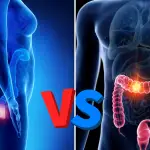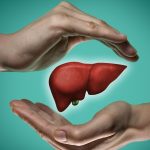The old Hemorrhoids grading scale, considers simply and only the haemorrhoidal plexus as the cause and effect of the disease and not the prolapse of the anoderm with the rupture of Parks’ ligaments as the cause and the consequent haemorrhoidal prolapse as the effect.
Hemorrhoids are classified into four grades according to their size and their prolapse.
1st degree : hemorrhoids increased in size, due to congestion, only during defecation, exclusively internal, detectable only with rectal exploration or anoscopy; internal mucous prolapse.
In this case the symptoms may be absent or, if present, they are modest and represented by a feeling of heaviness and discomfort in the anal region; sometimes itching; rarely and sporadically, moderate bleeding may occur at the end of defecation.
2nd degree: there is the progressive distension of the venous packets and the relaxation with prolapse of the submucosa; the gavoccioli protrude during defecation, but spontaneously reduce at the end of the same; spontaneously reducible external mucous prolapse. The symptomatology is present but of variable extent.
Symptoms are generally mild (itching, persistent weight and discomfort, tenesmus); more often the dominant symptom is bleeding that accompanies or follows defecation and which can be of various degrees: mostly it is modest and occasional; if chronic or intense it can lead to a picture of anemia; sometimes it can present itself as a real hemorrhage with consequent acute anemia.
3rd degree: the size of the haemorrhoidal packets is getting bigger, Parks’ ligament is more and more stretched and released, aggravating the mucous prolapse; the gavoccioli protrude outside during defecation and can only be put back in place manually; manually reducible external mucous prolapse.
The symptomatology is accentuated; worsening of tenesmus, itching, a sense of heaviness, slight pain may appear, more often stinging or burning; bleeding occurs more frequently; the appearance of “soiling” is possible; bleeding is almost constant. ODS symptoms may also appear or worsen if already present: constipation, fragmented defecation, stool incontinence.
4th degree: there is the complete exhaustion of Parks’ ligament with overt mucocutaneous prolapse and of the gavoccioli which become increasingly larger; permanent external mucous prolapse.

Hemorrhoids grading scale, symptoms
The symptoms are further aggravated; the pain is felt as stinging or burning or presents with spasms, most frequently nocturnal; there is intense itching, tenesmus, a sense of tension due to edema and congestion, a sensation of a foreign body, constant “soiling” can lead to irritation and maceration of the perianal skin; bleeding is almost constant.
Symptoms of ODS are aggravated: constipation, fragmented defecation, incontinence with stool, excessive and prolonged ponzamento, rectal and perineal aching or pain.
Morphologica classification
To this traditional and dated classification, a new one has recently been added, morphological, which refers to mucous prolapse:
TYPE 1: rectal mucosal prolapse with anoderm in anatomical position
TYPE II: a) anoderm displaced distally, soft and mobile;
b) distally displaced anoderm, fibrotic and with skin tags
This classification was also old compared to the new thrusts and new studies of pelvic floor pathology. In two important fora and in the presence of important international procto-surgeons, a new and modern classification has been reached that has brought together the pathology of prolapse of the rectum and disorders of the pelvic floor in a single and complete classification shown below:






